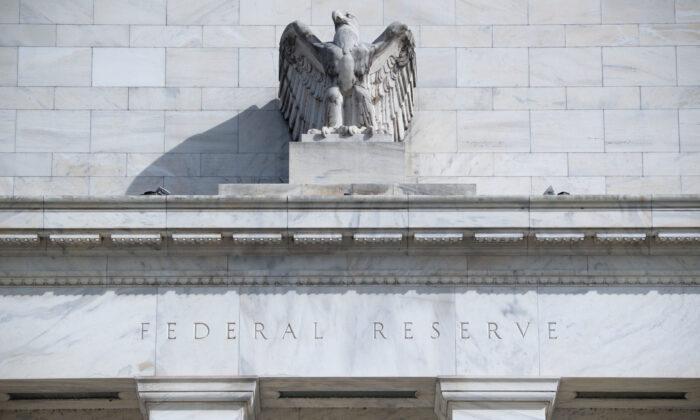Soaring oil prices are not only a serious threat to travelers, crazy high fuel prices seriously disrupt businesses, the economy. They even promote wars.
There are a number of reasons for the current surge in oil prices. The Federal Reserve’s monetary policy is primarily responsible for the overall rise in all prices. Without the extreme flood of money created by the Fed, there could be no sustained increase in inflation.
The War Factor
Rising fossil fuel costs also endanger global stability. Each of the last three times oil prices soared toward $100 it coincided with Russian aggression. In 2008, Russia attacked Georgia, in 2014 Crimea, and in February 2022, Ukraine.There are two reasons Putin becomes more aggressive when oil prices soar. Russia is an oil and resource-based economy; it is at its greatest strength when oil prices are high. Higher oil prices also leave the U.S. economy vulnerable and least likely to present any meaningful resistance to Russia’s aggression. This is particularly true when our government restricts our own oil production, as they are doing now.
Price Controls
Historically, U.S. oil and gas prices often have been highly regulated. In the 1950s and into the early 1980s, regulation took the form of price controls designed to provide the nation with cheap energy. The nation’s supply of natural gas was viewed as so plentiful that in the mid-1950s, the Federal Power Commission froze the price at the wellhead, reducing incentives for exploration and development. By the 1970s, the surplus of natural gas became a shortage. Also in the 1970s, federal controls over oil prices led to a decline in oil domestic production and an increasing reliance on imported oil.The history of oil and gas prices in the 1970s is instructive for what’s happening today. The following chart shows how domestic oil production declined from, 9.7 million barrels a day in 1971 to a low of 8.1 million in 1977. The decline made the U.S. more reliant on imports. OPEC responded to falling U.S. production by raising the price of oil, which went from $4 a barrel to $10 in 1974. Price controls on both oil and gas continued to restrict U.S. energy supplies throughout the 1970s. By the end of the decade, in a vain attempt to keep oil prices low, price controls became more severe and the energy shortages became even greater.
Government controls over energy prices not only failed to contain prices, by creating shortages, but the controls were also the main cause of the spike in prices. After taking office in 1981, President Ronald Reagan immediately removed price controls on gasoline. As a result, oil production began to increase and oil prices began to decline.
The next chart shows oil prices and production since 2000. Similar to our current situation, in 2008 the Fed had created too much money and the economy and inflation were increasing. Rising demand meant higher inflation along with oil prices. Also as today, there were international disruptions to oil production that added to the spike in prices. Oil prices went from $60 at the beginning of 2008 to over $125 in early 2009. The more than doubling in oil prices coincided with the financial crisis of 2008.
The chart also shows how relatively high oil prices from 2011 to 2015 created incentives for an increase in oil production. Without much in the way of federal controls or restraint, domestic oil production climbed from 2012 to 2016. The doubling in production to almost ten million barrels a day was sufficient to lower oil prices to an average of close to $50. New technological methods of fracking increased U.S. oil production to a peak of over 13 million barrels a day by the end of 2019.
The current turnaround in oil prices is almost as dramatic as experienced in the 1970s. A surge in oil and gas production by 2019, followed by the collapse in the economy due to the COVID lockdown, led to a collapse in oil prices to a monthly average less than $20 in April, 2020. The economic recovery that followed increased the demand for oil and prices soared.
History shows that when markets are allowed to operate, a sharp increase in demand increases the price of oil, which leads to an increase in production. The increase in production helps to moderate and constrain the increase in oil prices.
War Against Fossil Fuels
During the 1970s, government price controls limited oil production. Today production is constrained by the Biden administration’s energy policy. During the presidential debates, Joe Biden promised to “end fossil fuels.” From the first day of his administration, Biden’s policies have been designed to fulfill his promise to dismantle fossil fuels.The president and the Green lobby are doing everything they can to prevent fossil fuel companies from producing more energy. Instead of using price controls, their tactics include not issuing permits and leases for oil and gas development, placing limits on production on federal lands, blocking pipelines, and discouraging financing for fossil fuel companies. These tactics have been every bit as effective as price controls in holding back America’s potential to respond to today’s higher prices with more energy production.
The good news is the United States has the energy capacity necessary to increase production of oil and other fossil fuels. Current policies impose self-inflicting damage on an already vulnerable economy. It’s a policy that plays right into Russia’s hands by preventing the market from lowering energy prices in the most effective way possible—by producing more energy.







